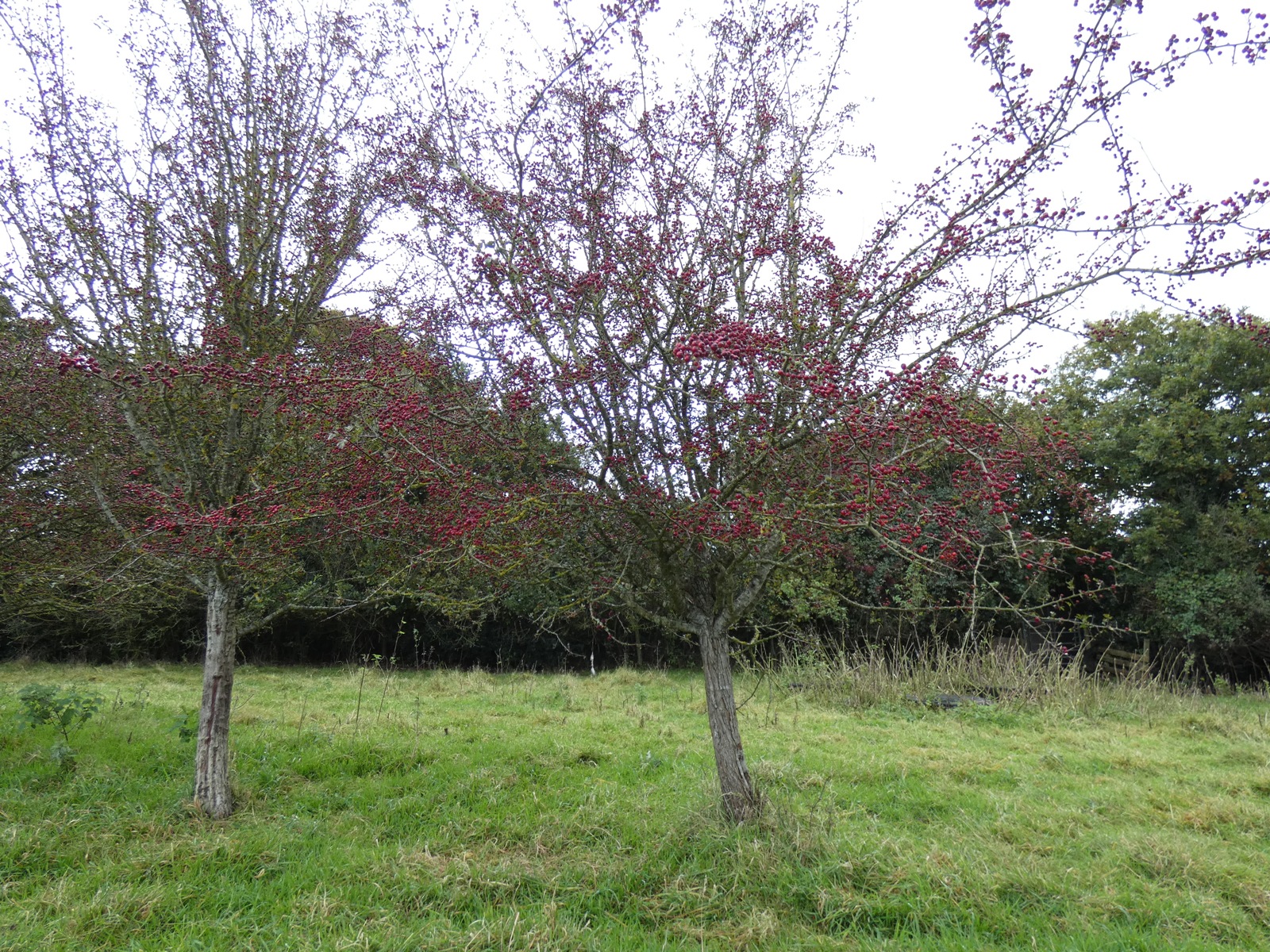Crataegus monogyna
Hawthorn
Species Tolerances
- Drought Tolerance: High
- Shade Tolerance: Yes
- Waterlogging Tolerance: Low
- Frost Tolerance (trees from warmer climates may be frost tolerant, but their flowers may not be): Yes
- RHS Hardiness: H7
- Optimum Conditions for Growth:
A small understorey tree in woodland but also grows well on its own. Hardy and adaptable it will grow in urban and coastal sites. Tolerant of virtually any site, sandy to heavy clay, dry or wet, unless in the extreme. No strong dependence on acid or alkaline soil. - Susceptibility to Pest/Disease:
May be susceptible to fireblight

Crataegus monogyna/ By Bee Happy Plants & Seeds
Service to Pollinators
- Summary of Service to Pollinators:
The shallow flowers provide nectar for all pollinators. Somewhat fickle in nectar production but sometimes abundant then honey is produced. - Nectar Value to Pollinators: 3 (of 0-3)
- Honeydew Value to Pollinators: 0 (of 0-3)
- Pollen Value to Bees: 3 (of 0-3)
- Flowering Period: May
Risks
- Human Toxicity: Non-toxic
- Livestock Toxicity: Non-toxic
- Invasive Risk: No
- Suckering: No
Products
- Edible Fruit: Yes
- Edible Leaves: Yes
- Edible Sap: No
- Edible Seeds: No
- Honey, major source in UK: Yes
- For any medicinal potential, see 'Further Details' below.
- Timber: No
- Livestock Fodder: Yes
- Other Products:
Fruits have been eaten by humans for millennia, and can be made into very palatable spreads and jams.
Utility
- Nitrogen Fixation: No
- Organic Matter Accumulation: Yes
- Phytoremediation: Insufficient Data
- Deacidification: Insufficient Data
- Windbreak: Yes
- Soil Erosion Control: Yes
- Shade or Shelter: Yes
- Plant Support: Insufficient Data
- Integrated Pest Management: Insufficient Data
- Wildlife Value: Yes
- Wildlife Value Summary:
Very good for biodiversity, refers to invertebrate diversity feeding on the tree, especially insects, and fruit for a large range of birds and mammals. Small tree providing thorny protection. - Graduated Nativeness Classification ⓘ: 1 (of 1-10)1. Historic Native
2. Historic Introduction
9. Neutral Introduction
Further Details
Medicinal potential is high, scientific evidence having emerged that there may be a basis for use in cardiovascular conditions. Sometimes suckering in a very limited way around the base of the trunk.